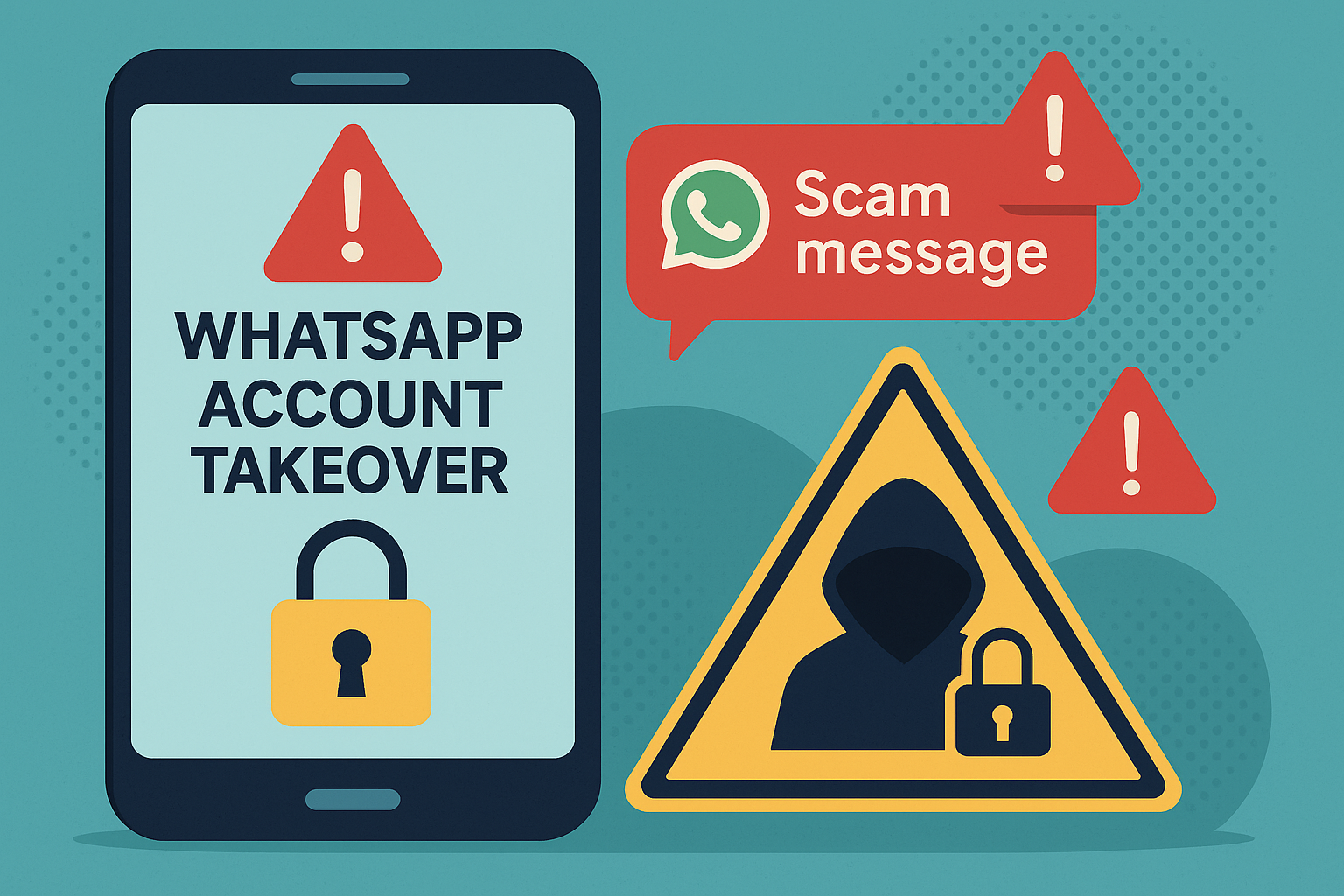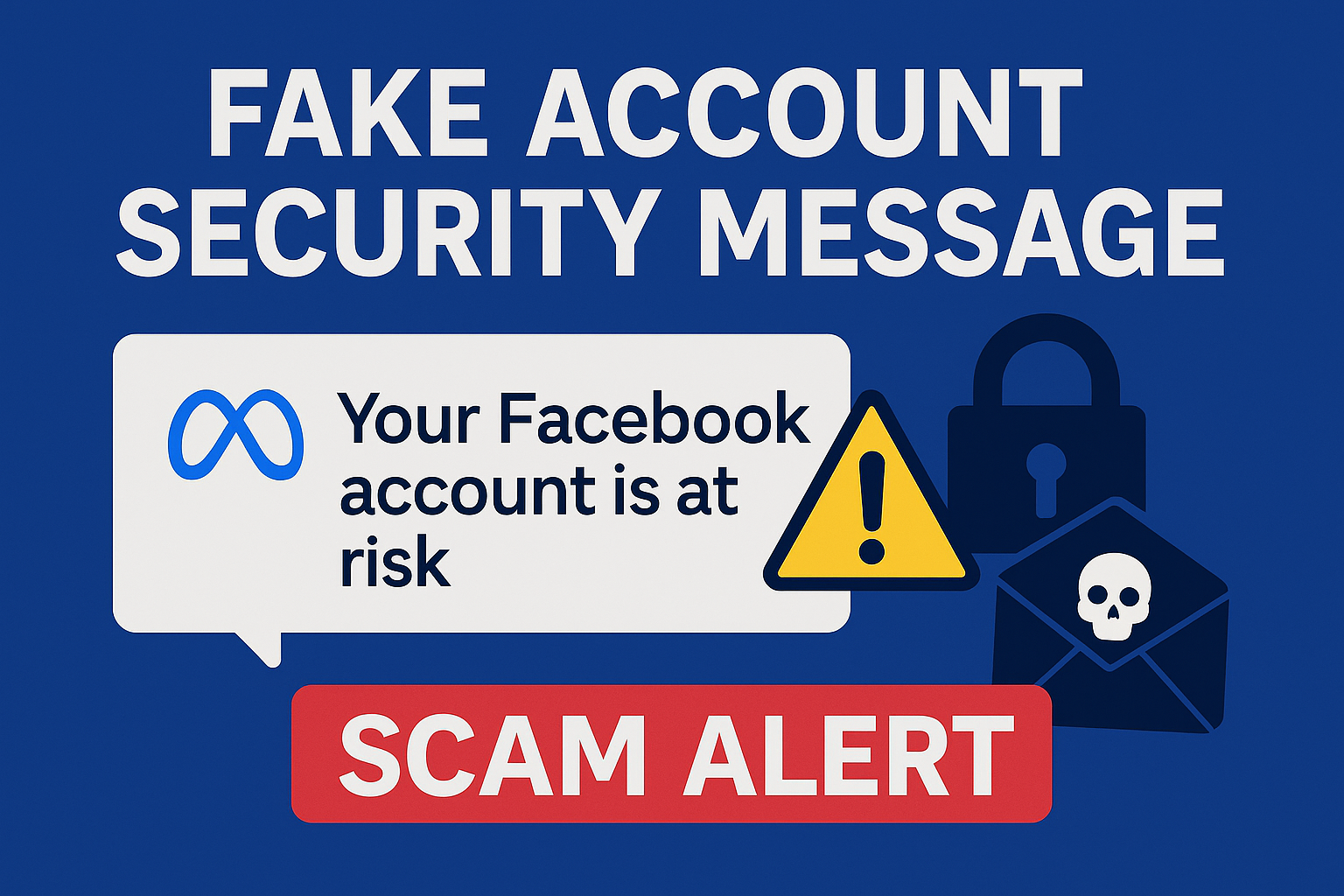Why This Scam Has Exploded Worldwide
The WhatsApp Account Takeover Scam has become one of the fastest-growing forms of digital fraud across North America, Europe, Africa, and Southeast Asia. Its success relies on a simple but powerful idea: if scammers gain access to someone’s WhatsApp account, they instantly gain access to their social circle, private messages, and identity. From there, the attacker can impersonate the victim to demand money, reset logins on connected services, or further propagate scams to friends, family, and coworkers.
WhatsApp now has more than two billion users, making it a prime target for criminals who rely on scale. According to the UK’s National Cyber Security Centre, WhatsApp impersonation scams increased by over 30% in 2023, driven largely by criminals exploiting verification flows and social-engineering tactics that are difficult for everyday users to detect.
How the Takeover Begins
This scam almost always begins with social engineering. Scammers rarely “hack” WhatsApp directly — instead, they manipulate the victim into handing over their verification code. WhatsApp accounts are tied to phone numbers, and changing the device requires just one thing: the six-digit verification code generated during login.
Scammers use several tactics to obtain this code. One of the most common approaches is sending the victim a message pretending to be a friend, relative, or someone from a group chat. The attacker claims they accidentally sent a verification code to the victim’s phone and urgently needs it. The message typically says something like:
“Hey, I accidentally sent you a code. Can you forward it to me? It’s really urgent.”
In reality, the code is for the victim’s own WhatsApp account. The scammer attempts to log in on their device using the victim’s number. When the six-digit code is sent via SMS, the victim — believing they are helping a friend — forwards it back.
Another variation involves fake warnings about account suspension. Victims may receive a message claiming their WhatsApp will be disabled unless they verify their identity. Others receive fake notifications about “policy violations” or “security issues,” all designed to push them toward revealing the code.
Once the scammer has the verification code, the takeover happens immediately.
What Happens After the Account Is Hijacked
When scammers take control of a WhatsApp account, they gain full access to the victim’s message history, contacts, and group chats. The victim is logged out and cannot regain access until they recover the account — which can be difficult if the attacker sets up additional security layers.
After gaining access, scammers usually move quickly. They often:
- Contact the victim’s friends or family pretending to be the victim
- Claim they urgently need money to pay a bill, cover an emergency, or unlock an account
- Ask contacts to send funds via e-transfer, PayPal, mobile money, or cryptocurrency
- Spread the scam further by asking additional contacts for verification codes
This chain reaction can unfold in minutes. Because the messages are coming from a familiar number with the victim’s profile photo, contacts rarely question whether the request is genuine.
For some victims, the damage goes beyond impersonation. Scammers may access private conversations, sensitive photos, or business communications. They may also try to reset passwords for other services linked to the phone number, including email accounts, social media platforms, and banking apps.
Why People Fall for WhatsApp Takeover Scams
This scam works because it exploits trust between friends and family. Most people assume that messages from known contacts are genuine. Scammers rely on that built-in confidence to bypass skepticism.
The scam also leverages urgency. Messages from scammers often sound frantic, emotional, or time-sensitive, making recipients act quickly without thinking. And because WhatsApp is used across diverse age groups, scammers often target older relatives or individuals less familiar with digital fraud.
Another reason for the scam’s success is the simplicity of the attack. WhatsApp’s verification method — a single SMS code — becomes a vulnerability when scammers trick users into sharing it. No hacking tools, malware, or technical skill are required.
How to Recognize the Scam Early
There are a few key signs that someone is attempting a WhatsApp takeover.
One major warning sign is receiving a verification code SMS that you did not request. If this happens, it means someone is trying to log into your WhatsApp account using your phone number. If a “friend” immediately messages asking for that code, the situation is almost always fraudulent.
Another red flag is receiving messages claiming that your account is at risk of being disabled or that you must “confirm your identity.” WhatsApp does not send such messages through chat.
Requests for money from friends or relatives — especially sudden or emotional requests — should always be double-checked through a phone call or in-person confirmation. Scammers often try to prevent verification by insisting that the situation is urgent.
Finally, if you are suddenly logged out of WhatsApp without explanation, it may be a sign that your account has been compromised.
How to Protect Yourself
The most effective protection against WhatsApp takeover scams is enabling two-step verification within the app. This feature allows users to set a six-digit PIN that is required whenever someone attempts to register the account on a new device. Even if a scammer obtains your verification code, they cannot complete the login without the PIN.
Never share verification codes with anyone, even if the request appears to come from a trusted contact. Verification codes are for login only — and WhatsApp will never ask you to confirm your identity by sending them through chat.
Educating friends and family is also essential. Many victims fall for the scam because they have never heard of it. A simple conversation can prevent someone from handing over their code during a moment of confusion.
Regularly reviewing your WhatsApp security settings and enabling end-to-end encrypted backups can help protect your account in case of a breach.
What to Do If Your Account Was Taken Over
If you lose control of your WhatsApp account, act quickly. Begin by attempting to log in again using your phone number. A new verification code will be sent to you, and entering it will usually remove the scammer from your account.
If the scammer has turned on two-step verification using their own PIN, you may need to wait seven days before you can regain access. While this delay is frustrating, it is built into WhatsApp’s recovery system to prevent ongoing exploitation.
Notify your contacts immediately through alternative channels — SMS, email, or another messaging app — so they know not to trust messages coming from your compromised account.
If your WhatsApp is linked to a business number or sensitive conversations, consider backing up your data after recovery and reviewing whether any settings or account information were altered.
Finally, report the attack to local fraud authorities, especially if the scammer used your account to request money from others.




